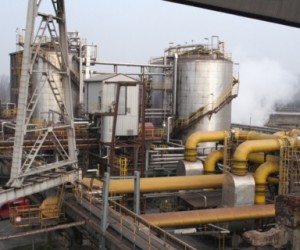At present, synthetic fuel can be more costly to produce than oil-based fuel, largely because of the lengthy process involved. This has meant that less research, development and investment has been devoted to streamlining synfuel processes than on conventional fuels.
So the Unisa invention – an intensified heat-transfer method for fixed-bed reactors that is used in synthetic fuel production – has great potential to improve process performance and reduce costs, says Dr Xiaojun Lu, Senior Researcher in Fischer-Tropsch Synthesis at the Materials and Process Synthesis (MaPS) unit on Unisa’s Science Campus.
Catalysts a major cost
A major cost factor in synthetic fuel production is the catalysts used inside the reactors to convert synthetic gas (a mixture of hydrogen and carbon monoxide) to synthetic fuels. The syngas can be made from biomass, carbon-containing waste, coal or natural gas. Catalysts are components vital to converting feedstock to fuel, and the longer they last and the more efficiently they work, the smoother and less expensive production is likely to be. One of the most common ways in which catalysts are damaged or destroyed is when there is overheating inside the reactor during the conversion process.
“When the chemical reaction is highly exothermic and a lot of heat is released, that heat needs to be removed very effectively,” says Lu. Excessive heat can damage the catalyst, forcing the plant engineer to shut down the reactor to replace the catalyst. This suspension in operation also escalates equipment and operating costs. Enter the Unisa invention – being patented as “Tubular fixed bed reactor with heat pipe for internal heat removal for Fischer-Tropsch synthesis”.
“The invention tries to eliminate hotspots in the reactor, reducing the catalyst cost and increasing the overall production rate. If this type of invention could be implemented in a big project, it could save the manufacturer between 20% and 30% of the reactor and catalyst cost respectively, while retaining the same production capacity,” Lu says. “The life of the catalyst could be extended and the overall plant would have a longer time online.”
Briefly, here is how the invention works inside a traditional fixed-bed reactor:
The reactor is a cylinder containing tubes, into which the catalyst is loaded. The tubes are packed in a way that leaves gaps, creating “empty volume” that is normally used for a cooling medium. However, the conventional cooling method is insufficient for the Fischer-Tropsch reaction, and therefore requires an additional heat-transfer path to remove excess heat.
A heat pipe designed by the Unisa team is inserted into the catalyst bed to provide an additional heat-transfer path. It is essentially a piece of sealed tubing containing liquid. When heated, the liquid turns into gas, which absorbs and removes the heat from the catalyst bed through evaporation.
The gas is then turned back into liquid at the top section of the heat pipe, where it heats up the reactants to the reaction temperature. The condensed liquid flows back to the section where the catalyst is to absorb heat again.
Patent process in progress
The invention is being patented both in South Africa and internationally. A Patent Cooperation Treaty application was filed in 2015 and the process is due to enter the national phase in May 2017.
The Unisa team of inventors, comprising Lu, Prof Diane Hildebrandt and Prof David Glasser, has previously worked on international energy projects, which have given the team a sound insight into current trends in alternative fuel production. In 2004, they worked on a coal gasification and synthetic fuel project in Australia, and from 2005 to 2009 they designed and commissioned a coal-to-liquid fuel plant in China.
Most recently, the team has been working on a gas-to-liquid fuel project in Houston, Texas.
The invention is part of the Waste to Energy technology developed by the MaPS group at Unisa, which is centred on using renewable energy to provide clean fuel from carbon-containing waste, such as biomass, agricultural and forestry waste, and solid municipal waste.
However, the application of this invention is not limited to the Waste to Energy field. It could attract strong international interest from producers in countries such as the United States and Eastern Europe, where the use of fixed-bed reactors is widespread. All are seeking ways to drive down costs and push up efficiency. “Our research teams are on the lookout for better solutions,” says Lu. “This invention is trying to push reactor design to the next level. You could say it is the next step in reactor design.”










